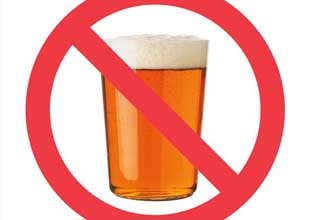
Prevent Drowning
DROWNING: GET THE FACTS FROM THE U.S. CENTERS FOR DISEASE CONTROL
Every day, about ten people die from drowning. Of these, two are children aged 14 or younger. Drowning ranks fifth
among the leading causes of unintentional injury death in the United States is drowning.
The main factors that affect Drowning risk are
Lack of Swimming Ability can cause Drowning: Many adults and children report that they can’t swim. Research has shown tha participation in formal swimming lessons can reduce the risk of drowning among children aged 1 to 4 years.
Lack of Barriers can cause Drowning: Barriers, such as pool fencing, prevent young children from gaining access to the pool area without caregivers’ awareness. A four-sided fence to separate the pool area from the house and yard reduces child’s risk of drowning by 83% compared to three-sided property-line fencing.
Lack of Close Supervision can cause Drowning: Drowning can happen quickly and quietly anywhere there is water (such as bathtubs, swimming pools, buckets), and even in the presence of lifeguards.
Location: People of different ages drown in different locations. Most children ages 1-4 drown in home swimming pools. More than half of drownings among those 15 years and older occurred in natural water settings.
Failure to Wear Life Jackets can cause Drowning: In 2010, most (72%) boating deaths were caused by drowning, with 88% of victims not wearing life jackets.

Prevent Drowning
Alcohol Use can cause Drowning: Among adolescents and adults, alcohol use is involved in up to 70% of deaths associated with water recreation. Alcohol influences balance, coordination, and judgment, and its effects are heightened by sun exposure and heat.
Seizure Disorders can cause Drowning: For persons with seizure disorders, drowning is the most common cause of unintentional injury death, with the bathtub as the site of highest drowning risk.
Tips to help you stay safe in the water and prevent drowning:
Supervise When in or Around Water. Designate a responsible adult to watch young children while in the bath and all children swimming or playing in or around water.
Supervisors of preschool children should provide “touch supervision”, be close enough to reach the child at all times. Because drowning occurs quickly and quietly, adults should not be involved in any other distracting activity (such as reading, playing cards, talking on the phone, or mowing the lawn) while supervising children, even if lifeguards are present.
Use the Buddy System. Always swim with a buddy. Select swimming sites that have lifeguards when possible.
Seizure Disorder Safety can cause Drowning. If you or a family member has a seizure disorder, provide one-on-one supervision around water, including swimming pools. Consider taking showers rather than using a bath tub for bathing. Wear life jackets when boating.
Learn to Swim to prevent drowning. Formal swimming lessons can protect young children from drowning. However, even when children have had formal swimming lessons, constant, careful supervision when children are in the water, and barriers, such as pool fencing to prevent unsupervised access, are still important.
Learn CPR to prevent drowning. In the time it takes for paramedics to arrive, your CPR skills could save someone’s life.Air-Filled or Foam Toys are not safety devices. Don’t use air-filled or foam toys, such as “water wings”,”noodles”, or inner-tubes, instead of life jackets. These toys are not designed to keep swimmers safe.

Learn CPR To Prevent Drowning
Don’t let swimmers hyperventilate before swimming underwater or try to hold their breath for long periods of time. This can cause them to pass out (sometimes called “shallow water blackout”) and drowning occurs.
Avoid Alcohol and prevent drowning. Avoid drinking alcohol before or during swimming, boating, or water skiing. Do not drink alcohol while supervising children.

Avoid Alcohol To Prevent Drowning
Know the local weather conditions and forecast before swimming or boating. Strong winds and thunderstorms with lightning strikes are dangerous.

Comments
Thanks Angela!
Excellent post Timothy. Informative and Important Advice. Liked and Shared.